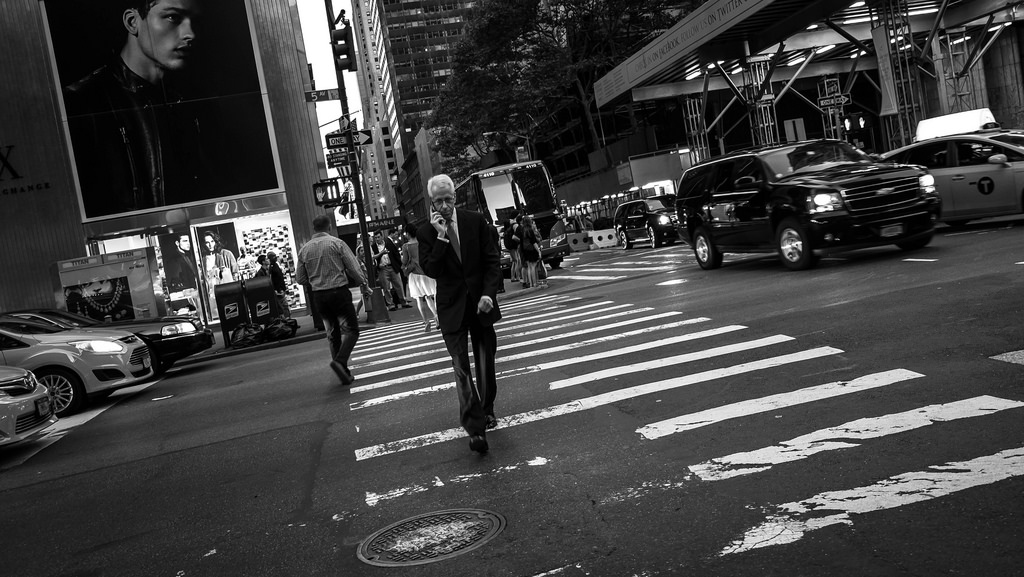Smartphone lane for pedestrians with mobile phones?
Pokémon Go has become a regular sight on the streets and the front pages over the last few days. The phenomenon created by the video game, which is available in 35 countries with over 35 million downloads, has been explored from different perspectives: the price of Nintendo on the stock market; addictions caused; the differences in popularity between generations; game locations; PokeStops and PokeMeets, among other features. Nevertheless, there is no doubt that the accidents and incidents reported in public areas have caught the attention of local authorities and the media and opened a debate on the "safety" issues and risks involved (depending on how the issue is seen) when walking while holding a mobile phone.
Local authorities have recently been warning about the risks and promoting safety campaigns to raise awareness of potential accidents when driving with a mobile phone. A few days ago, soon after Pokémon Go was released, the same concern was also raised for pedestrians, who were warned of the need to respect road safety rules and remain aware of their surroundings while walking. The Professional Association of Physiotherapists in Madrid also emphasized that looking at a mobile phone can increase the risk of an accident by 40%.
However, millions of people worldwide walk around cities without taking their eyes from their mobile's screen. This has been called "distracted walking", "dumbwalking" or "zombiewalking", carried out by a "smartphone zombie". According to a Pew Research study, 53% of mobile phone users bump into other people or fall over while using their device, and these images are becoming an increasingly common sight in the urban landscape.
A new urban landscape
Pedestrians with mobile phones, or smartphone zombies, are transforming the images associated with cities. According to Francesc Núñez, a sociologist at the UOC, "virtual technology has been creating new social dynamics for quite some time, by establishing new ways to relate/interact with other people and both amplifying and strengthening those already in place". In this particular case of an app that is all the rage, "we are witnessing a game that combines (not for the first or last time) the realm of the virtual world with that of the physical, two places where individuals usually live or travel separately, but which on this occasion have melded together".
Núñez adds that "different social phenomena will require, as always, new guidelines for the personal and general use of this new technology, with other players and other people who are affected by the game. New methods of social interaction require new rules and guidelines for correct and responsible behaviour".
Challenges for urban management
What challenges does this present for urban management and planning? For Jordi Borja, an urban developer and professor at the UOC, cities are facing "far more important challenges than thinking about games for idle individuals who disrupt daily life for the majority of people as they travel to work and try to enjoy all that urban life has to offer. The game spreads values based on a negative kind of individualism and gratuitous competition".
For Borja, options such as the "smartphone lane", which have already been adopted in some cities in China, are not the answer. He explains that "public spaces cannot be divided for different purposes or activities. There is even a tendency to bring together different kinds of public movement in multi-use areas such as trams". To address this new situation, "you simply need to impose sanctions on behaviour that presents a risk or disturbance for other people".
The impact of wearables, a key alternative
Another open question is whether the wearable technology industry could be a key alternative in addressing these circumstances. According to Xavi Vilajosana, professor at the Faculty of Computer Science, Multimedia and Telecommunications and researcher at the IN3, "wearables can at the very least reduce risks, for example, by activating wrist vibrations when approaching an obstacle on the path ahead".
Vilajosana states that "the mobile phone itself could be the key device, as it contains sensors and front and back cameras that can be used for guidance or assistance when walking with a mobile phone". Nevertheless, "it is not the best alternative" for road safety.
Some cars are already designed with systems that deactivate mobile phone notifications while driving. He adds that "these systems could also be used for walking, and could deactivate certain applications with movement detection systems. This information in turn could be combined with GPS data, beacons, etc., which would limit access to or operation of programs or applications in risk-based situations".
He emphasizes that in the particular case of augmented reality, "this feature clashes with public movement in a sense, and therefore any application that extends our perception of reality represents a risk, as it creates a distraction".
Innovative designs such as Google glasses, "which we could use to explore nearby and distant visual space without moving our heads", run into problems linked to habit, ergonomics and technology use. There is therefore still a long road ahead before we find safe alternatives to zombiewalking.
Experts UOC
Press contact
-
Editorial department
